
The first session of the cycle on the regatta organized...
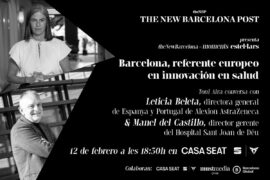
Leticia Beleta, director of Alexion Pharmaceuticals in Spain and Portugal,...

Maybe because of tradition, or because of its huge media...

In Stuttgart there are two imposing museums for two leading...

On October 28th at 3 o'clock a.m. we rewinded the...
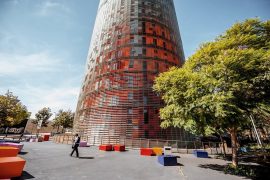
Barcelona has been an outstanding entrepreneurial centre for the technology...
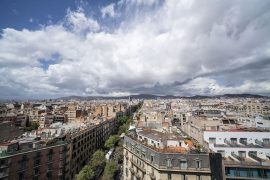
The hotel and industrial sectors softened the market's decline last...

There are things that only happen once in a lifetime....

Jane Goodall travels the world 300 days a year asking...

Film, from the beginning a way to portray the unportrayable...

Música clásica sobre la arena de la playa en dos...

The first session of the cycle on the regatta organized...

The hospital's managing director, Manel del Castillo, and the pharmaceutical...
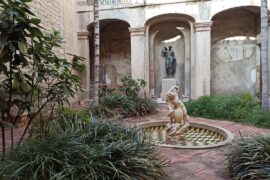
Generalitat y Ayuntamiento impulsarán dos equipamientos de 'Casa de les...

Leticia Beleta, director of Alexion Pharmaceuticals in Spain and Portugal,...
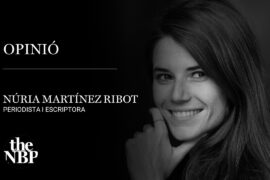
We all have a friend who never leaves the Gràcia...

Barcelona director opts for Best International Film with 'La sociedad...

The hotel and industrial sectors softened the market's decline last...

The technology company, with a workforce of 35 employees and...
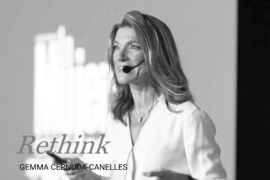
“The women of yesteryear were strong and had to fight...
[dropcap letter=”O”]
n Wednesday, May 9th, Els ulls dels homes mentiders (The Eyes of Lying Men) by Jordi Coca reaches the bookshops . This is the fourth instalment of seven that make up the Matar el monstre (Kill the Monster) series published by Comanegra. We said in an earlier article that it will not be the essays filling the shelves in the bookshops these days that will define Barcelona during the Catalan political process, but rather fiction. This editorial project is yet more ambitious. It intends to build a great polyphonic fresco of the city in seven novels by seven authors of different generations and styles.
Each is independent of the others, but at the same time they link with each other in a tribute to Frankenstein as the backdrop and with a character that appears in all of them, but with a changed name. In 1818, two centuries ago this year, Mary Shelley’s Modern Prometheus was published, and would eventually be made popular by the movies a century later. The parallel story of this mysterious figure that connects all the readers will be revealed next Christmas, when the last three works—Secundaris (Secondaries) by Núria Cadenas, Vindràs amb mi després del diluvi (You Will Come With Me After the Deluge) by Mar Bosch and Angèlica & Rafel by Miquel de Palol—hit the street.
Authors mine the past, but they do so inevitably from their experience of the present. The NBP has asked each of the first four authors who are participating in the project to take their personal exercise in fiction a little further and seek out what similarities they have found between the periods in which they set their plots and contemporary Barcelona.
In 1818, family circumstance forces a young woman, Carme Coroleu, to take charge of a family-owned cotton mill. The city is emerging from the Peninsular War in the midst of a liberal boom, but is at the same time constricted by its walls and its growing population. Ada Castells, the author of La primavera pendent (The Pending Spring), which opens the heptalogy, considers that there is a modern ring to the period as “Barcelona cannot progress economically because of a Bourbon King who remains impermeable to change. Ferdinand VII was El deseado—the Desired—but at the moment of truth, he does not respect the new Cádiz Constitution that had given some hope for change in a country besieged by the inflexibility and exploitation of the oligarchs.”
Susanna Rafart: Barcelona, that is « “like a lady of pleasure, admires and is admired, she is very beautiful, and shows her secrets and charms with certain vanity. Her voice and power come from all those anonymous women who sustain her, both then and now.”
In a leap forward to 1888, the year of the Universal Exhibition, Susanna Rafart’s La fugida d’Urània (Urania’s Flight) knits together the adventures of the emerging photographers who capture the instant of everything—misery and industrialization, progress and imposture. The main character, frustrated painter Eugeni Bellavista, is devoted to gallant photography and bares those contradictions. As the author says, “Barcelona has always been a city exposed to the gaze of others.” A city, she adds, that “like a lady of pleasure, admires and is admired, she is very beautiful, and shows her secrets and charms with certain vanity. Her voice and power come from all those anonymous women who sustain her, both then and now.”
Julià de Jòdar, who fictionalised a peripheral district of Barcelona set in the forties and fifties during the post-war period in the celebrated trilogy L’atzar i les ombres (Chance and Shadows) in a wide open example of what might be a fiction for today’s Der Prozess , this time sets his tale in 1929. Here, he recovers the figure of Gregori Salicru, who comes to the Can Tunis shanty town, next to the port, to work in a metallurgy laboratory. There he experiments with the most wretched of workers with the intention of achieving a so-called “Metallic Superman.” The parallel enjoined with Frankenstein is evident. The author travels around Barcelona in the midst of the Primo de Rivera dictatorship, in which there are clear invocations of current situations, such as “economic elites that are subordinate to a Spanish state in crisis, and a rising Republican Catalanism.”
After the Civil War comes the city of 1968. Ernest, the son of a bourgeois family that colludes with the Franco regime, joins the anti-Franco university movements, and even lives through the illustrious May ‘68 in Paris, the reach of which we are still debating now, on its fiftieth anniversary. The author of the novel, whose publication coincides with the month of the French revolt, is Jordi Coca. The writer finds that Barcelona in those days has nothing to do with the city now. He argues that “one of the great changes is the human and cultural countenance: in the sixties everything was more homogeneous, there were not as many contrasts as now; Another difference is that the Catalan language, whether written or spoken, was still practically buried. And we longed for democracy, convinced that a different political system would guarantee happiness.”
Next autumn and winter, the last three novels of the Matar el monstre project, in which the City Council has collaborated, will be set in the Barcelona of 1992, 2004 and 2018. They will come closer and closer to Barcelona’s current city of lifestyle, business, talent and added value. A city that “gets by and progresses, as always, on the basis of staking on an urbanism that will transform it,” says Castells, with the contribution of “a spark of resistance that we still retain,” adds Rafart, “less ingenuous than a century and a half ago,” says Coca, and everything within a framework of contrast between “urbanism and speculation, housing and evictions,” says Jòdar.
[dropcap letter=”O”]
n Wednesday, May 9th, Els ulls dels homes mentiders (The Eyes of Lying Men) by Jordi Coca reaches the bookshops . This is the fourth instalment of seven that make up the Matar el monstre (Kill the Monster) series published by Comanegra. We said in an earlier article that it will not be the essays filling the shelves in the bookshops these days that will define Barcelona during the Catalan political process, but rather fiction. This editorial project is yet more ambitious. It intends to build a great polyphonic fresco of the city in seven novels by seven authors of different generations and styles.
Each is independent of the others, but at the same time they link with each other in a tribute to Frankenstein as the backdrop and with a character that appears in all of them, but with a changed name. In 1818, two centuries ago this year, Mary Shelley’s Modern Prometheus was published, and would eventually be made popular by the movies a century later. The parallel story of this mysterious figure that connects all the readers will be revealed next Christmas, when the last three works—Secundaris (Secondaries) by Núria Cadenas, Vindràs amb mi després del diluvi (You Will Come With Me After the Deluge) by Mar Bosch and Angèlica & Rafel by Miquel de Palol—hit the street.
Authors mine the past, but they do so inevitably from their experience of the present. The NBP has asked each of the first four authors who are participating in the project to take their personal exercise in fiction a little further and seek out what similarities they have found between the periods in which they set their plots and contemporary Barcelona.
In 1818, family circumstance forces a young woman, Carme Coroleu, to take charge of a family-owned cotton mill. The city is emerging from the Peninsular War in the midst of a liberal boom, but is at the same time constricted by its walls and its growing population. Ada Castells, the author of La primavera pendent (The Pending Spring), which opens the heptalogy, considers that there is a modern ring to the period as “Barcelona cannot progress economically because of a Bourbon King who remains impermeable to change. Ferdinand VII was El deseado—the Desired—but at the moment of truth, he does not respect the new Cádiz Constitution that had given some hope for change in a country besieged by the inflexibility and exploitation of the oligarchs.”
Susanna Rafart: Barcelona, that is « “like a lady of pleasure, admires and is admired, she is very beautiful, and shows her secrets and charms with certain vanity. Her voice and power come from all those anonymous women who sustain her, both then and now.”
In a leap forward to 1888, the year of the Universal Exhibition, Susanna Rafart’s La fugida d’Urània (Urania’s Flight) knits together the adventures of the emerging photographers who capture the instant of everything—misery and industrialization, progress and imposture. The main character, frustrated painter Eugeni Bellavista, is devoted to gallant photography and bares those contradictions. As the author says, “Barcelona has always been a city exposed to the gaze of others.” A city, she adds, that “like a lady of pleasure, admires and is admired, she is very beautiful, and shows her secrets and charms with certain vanity. Her voice and power come from all those anonymous women who sustain her, both then and now.”
Julià de Jòdar, who fictionalised a peripheral district of Barcelona set in the forties and fifties during the post-war period in the celebrated trilogy L’atzar i les ombres (Chance and Shadows) in a wide open example of what might be a fiction for today’s Der Prozess , this time sets his tale in 1929. Here, he recovers the figure of Gregori Salicru, who comes to the Can Tunis shanty town, next to the port, to work in a metallurgy laboratory. There he experiments with the most wretched of workers with the intention of achieving a so-called “Metallic Superman.” The parallel enjoined with Frankenstein is evident. The author travels around Barcelona in the midst of the Primo de Rivera dictatorship, in which there are clear invocations of current situations, such as “economic elites that are subordinate to a Spanish state in crisis, and a rising Republican Catalanism.”
After the Civil War comes the city of 1968. Ernest, the son of a bourgeois family that colludes with the Franco regime, joins the anti-Franco university movements, and even lives through the illustrious May ‘68 in Paris, the reach of which we are still debating now, on its fiftieth anniversary. The author of the novel, whose publication coincides with the month of the French revolt, is Jordi Coca. The writer finds that Barcelona in those days has nothing to do with the city now. He argues that “one of the great changes is the human and cultural countenance: in the sixties everything was more homogeneous, there were not as many contrasts as now; Another difference is that the Catalan language, whether written or spoken, was still practically buried. And we longed for democracy, convinced that a different political system would guarantee happiness.”
Next autumn and winter, the last three novels of the Matar el monstre project, in which the City Council has collaborated, will be set in the Barcelona of 1992, 2004 and 2018. They will come closer and closer to Barcelona’s current city of lifestyle, business, talent and added value. A city that “gets by and progresses, as always, on the basis of staking on an urbanism that will transform it,” says Castells, with the contribution of “a spark of resistance that we still retain,” adds Rafart, “less ingenuous than a century and a half ago,” says Coca, and everything within a framework of contrast between “urbanism and speculation, housing and evictions,” says Jòdar.
